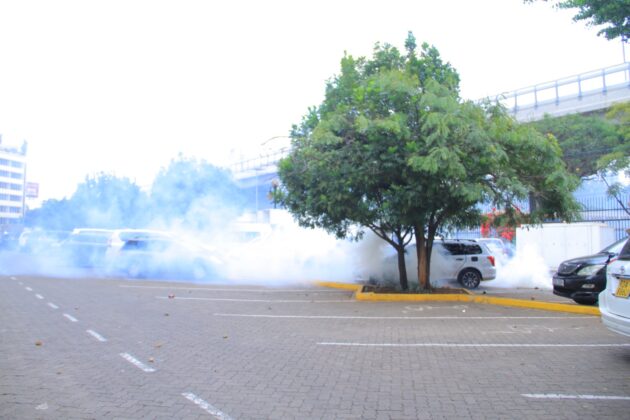
Youths inducted into bhang use in GenZ protests to reduce effects of teargas » Capital News
NAIROBI, Kenya, Feb 13— A new study by the National Authority for the Campaign Against Alcohol and Drug Abuse (NACADA) has revealed a disturbing rise in drug and substance abuse among university students, with a notable spike linked to last year’s Gen Z-led demonstrations.
Speaking at the launch of the Status of Drugs and Substance Use Among University Students in Kenya report, NACADA CEO Anthony Omerikwa warned that the findings should serve as a wake-up call for the country.
“The findings of this report will make you sit up and take notice of the status of alcohol and drug abuse among our youth. It reveals a very serious and growing problem, especially among those in higher learning institutions,” he said.
One of the most alarming revelations from the study was the “unintended” link between drug use and last year’s youth-led demonstrations.
According to Omerikwa, many young protesters were introduced to drugs during the protests, under false claims that substances like cannabis could reduce the effects of tear gas.
“Some of the young people who were in the protests became unexpected inductees into the space of drug use. They were deceived into believing that if they smoked bhang, the effects of tear gas would diminish to near zero,” he noted.
The report found that some individuals apprehended during the protests admitted to using drugs for the first time during the demonstrations.
Omerikwa estimated that 70 percent of those apprehended belonged to higher learning institutions.
He emphasized that drug abuse among young people is not just a campus issue but a national crisis that requires urgent collective action.
Beyond traditional substances like alcohol and cannabis, NACADA has also identified a rising trend in the use of synthetic drugs.
Omerikwa pointed out that the substances are difficult to detect because their chemical precursors are often legal and easily accessible.
“This is like fighting an invisible enemy. You don’t see him coming, but when you realize he’s around, it’s too late,” Omerikwa warned.
The survey, conducted in partnership with 17 universities, involved over 15,000 students across Kenya’s eight administrative regions.
Omerikwa stated that the findings provide a critical baseline for tracking drug use trends and evaluating the effectiveness of government interventions.
“This report will inform deliberate measures to either improve what we are already doing or inject new strategies to combat drug use,” Omerikwa explained.
To address the crisis, NACADA has pledged to use the study’s findings to tailor drug prevention strategies, enhance awareness campaigns, and promote positive parenting.
The agency will also focus on strengthening multi-sectoral collaborations to curb the supply and demand of illicit substances.
Omerikwa also warned that drug dealers are taking advantage of every opportunity to lure young people into addiction, creating a long-term demand for their illegal trade.
“Unscrupulous merchants of drugs look for every opportunity to entice and get our youth into addiction,” he cautioned